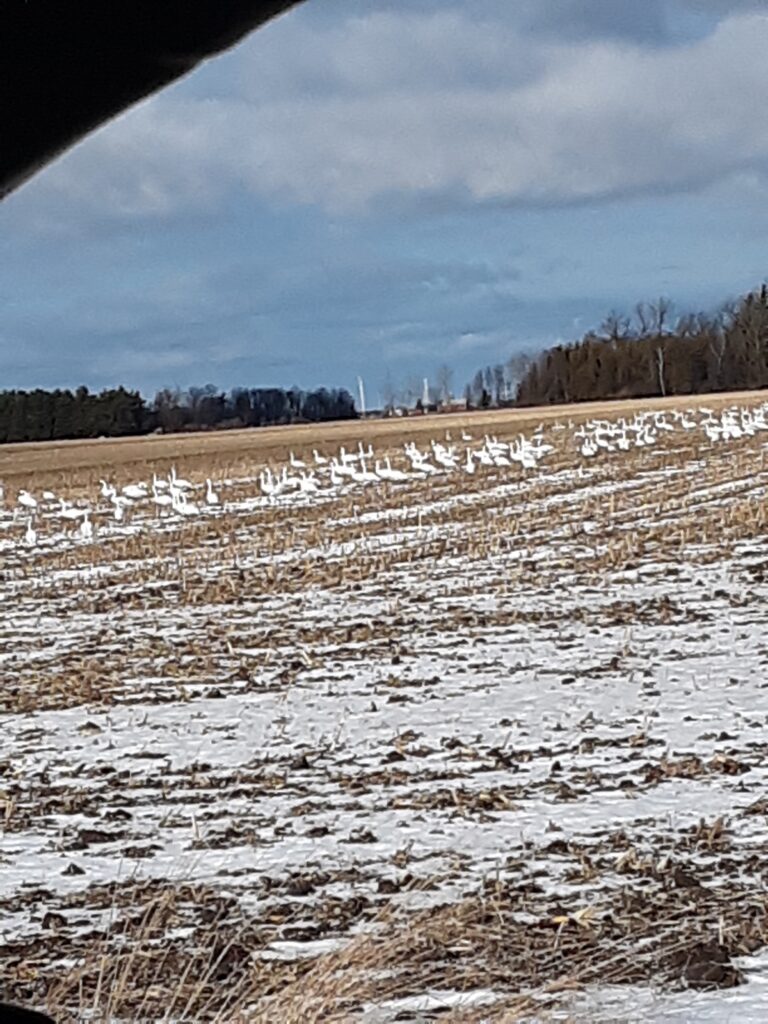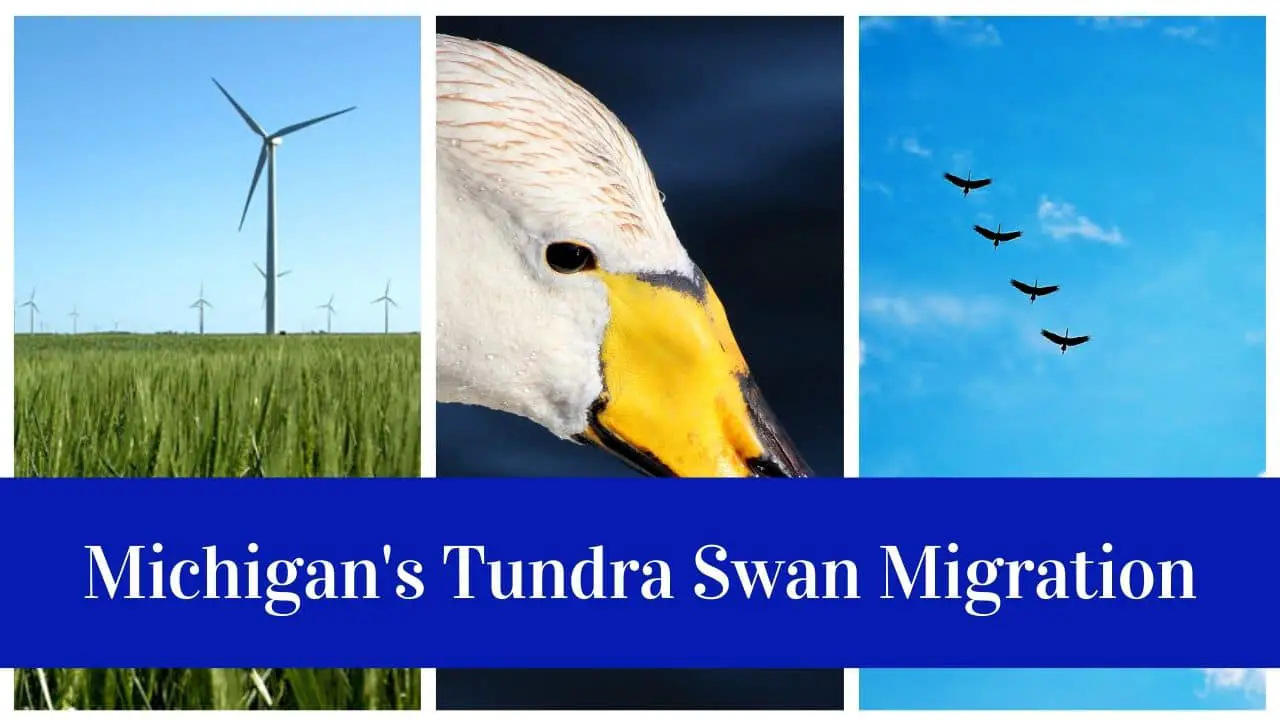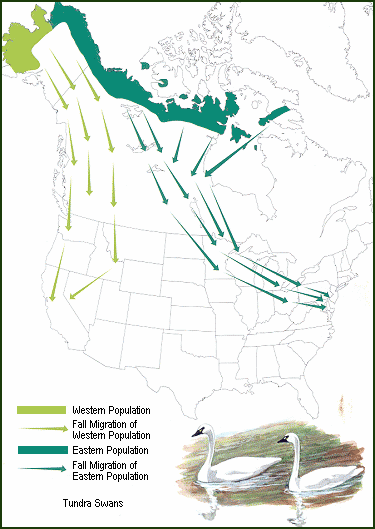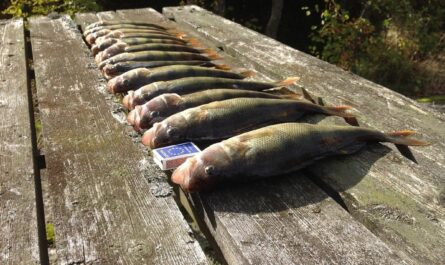An Annual Sighting Many Look Forward To
Over the years, we have received several reports from our readers noting the annual migration of Tundra swans across the Thumb. One reader noted. “Tuesday night around 8 pm there were hundreds, possibly even a thousand or more, migrating Tundra Swans in the field on the southeast corner of Champagne and Kinde, flying northwesterly towards Rush Lake in groups of a dozen or so, not more than a couple of hundred feet off the ground.”

This morning we received this perfect shot of migrating swans in a field on Helena in Sand Beach Township. Christina noted, “Not as many as I have seen before, but I thought you might want to know. There were several black swans too.” We sure do and thanks for the photo.

The tundra swan passes through the Thumb region on their migration routes. Shortly after ice thaws, hundreds to sometimes thousands of tundra swans can be seen resting in Great Lakes marshes. The Saginaw Bay area is considered one of the best sites to see a tundra swan migration stop, a migration that takes them approximately 4,200 miles.
According to CBC News in Canada concerns over wind turbines in the migration path are making headlines in Canada. A waterfowl specialist says wind turbines could spell danger for Tundra swans and the economy in Lambton County Ontario.
Turbines May Affect Migration Patterns
Dr. Scott Petrie said building industrial wind farms in Grand Bend, Ontario, Canada will scare the birds from their annual migration stop. He said the province isn’t considering how the 250 turbines proposed for the area will affect wildlife.
“By putting the turbines in inappropriate places, it actually is tantamount to habitat loss. You wouldn’t put an office tower next to a coastal wetland. Why would you put a wind turbine there?” he said.
Petrie said turbines could also hurt Grand Bend economically. If the Tundra swans avoid the area, so will birdwatchers, he said. Every March, birders come out to see the approximately 10,000 swans as they migrate north.

Zephyr Wind Development plans on over 250 wind turbines to be placed near Grand Bend Ontario. Grand Bend is almost directly across Lake Huron from Huron County and shares the same migration route.
Tundra Swans are Truly Snowbirds
Tundra swans spend their summer on the northern coast of Alaska and Canada. Some stop on the shorelines of Hudson’s Bay and on the most northern islands of Canada. As summer wanes they migrate for the winter on the Atlantic and Pacific coasts and even in certain inland areas of some western states. The Western tundra swans cross the Great Lakes States and stop for the winter season in Chesapeake Bay. During their migratory flight the swans stop as they pass over Michigan.
Anyone with digital pictures of a Tundra swan stop sighting in the Thumb is invited to send them to thumbwind@gmail.com. We will update this post with your shots.
Related Reading
- Straw Bale Gardening in Michigan’s Thumb – Melissa got the idea of straw bale gardening from a book by Joel Karsten. Joel comes to us from Minnesota, where the growing season is abridged and the soil tough to cultivate. At the tip of Michigan’s Thumb, the situation in northern Huron County is similar.
- A Day Trip to Cheeseburger in Caseville Festival – Here are some hints for your day trip to the Thumb provided by those who frequent the event each year for your next Caseville Day Trip.
- After A Decade In Hibernation, The Winter Carnival Returns To Port Austin








That is welcome news. It will be interesting to see the impact as more turbines are placed into service in Huron County. Thanks for stopping by.
Interesting article, I asked a regular observer at the Mackinac Straits Raptor Watch if they count Tundra Swans in the during migration. His response was that thousands of Tundra Swans used to use the St. Mary’s River as a resting stop, but now they don’t see them anymore. This could easily be the result of the wind turbines in Ontario.
Al Menk